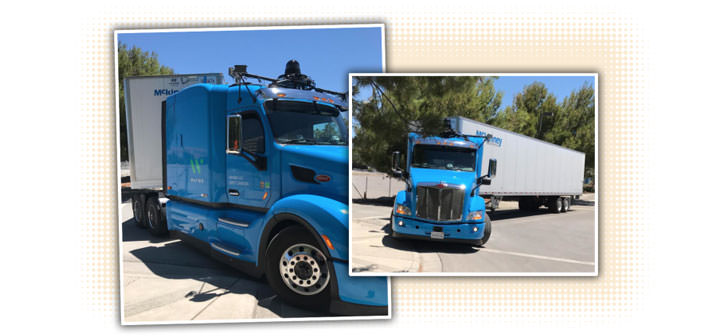Discovered Google’s Autonomous Guide: Here are the first photos
The division for Google’s self-contained vehicles, Waymo, has (at least) a truck with built-in sensor for autonomous driving that is traveling between American roads.
Waymo (who is part of Google) has confirmed that he is working on a stand-alone truck, and now that model – in a prototype version – we have the first photos. The images were provided by Jalopnik and portrayed a Peterblit Model 579 with all the sensors needed for the operation of the autonomous guide. This is an ideal platform for testing the technology thanks to its fuel efficiency and the presence of an automatic transmission.
The vehicle now looks identical to the commercially available model, with the exception of the sensors installed on the top of the cabin. On its roof, we find the glass dome concealing all the accessories needed for LIDAR and four ultrasonic sensors. Along the front bumper, right beneath the plate, we find an additional radar. These are just the sensors we can see from the published photographs, but there may be others.
 We do not know, for example, whether the load along the back side also needs to use additional sensors to provide information to the centralized system used by the autonomous guide, or whether there are cameras along the entire body for the same purpose. However, in spite of the pachydermic dimensions of vehicles, the ideal use destination for autonomous driving seems to be just the one that concerns the driving of articulated vehicles.
We do not know, for example, whether the load along the back side also needs to use additional sensors to provide information to the centralized system used by the autonomous guide, or whether there are cameras along the entire body for the same purpose. However, in spite of the pachydermic dimensions of vehicles, the ideal use destination for autonomous driving seems to be just the one that concerns the driving of articulated vehicles.
These are vehicles that are used for long stretches, often on the highway, which is the very environment where automated guidance algorithms are more comfortable (at least today). The management of the fleet becomes increasingly centralized, and so the guidance could become so as to have more control over the individual vehicles of each company. Of course, there will be no negative aspects related to what we can consider as ” software automation ” .
Naturally, we refer to the large number of jobs that will inevitably be eliminated, or anyway to professionals transferred to other areas. There may be a need for a car and bone operator inside these trucks, a ” mind ” capable of managing some operations, including communications with a central unit, load security, refueling, or recharging Batteries, jobs where the software at the moment is too deficient.

